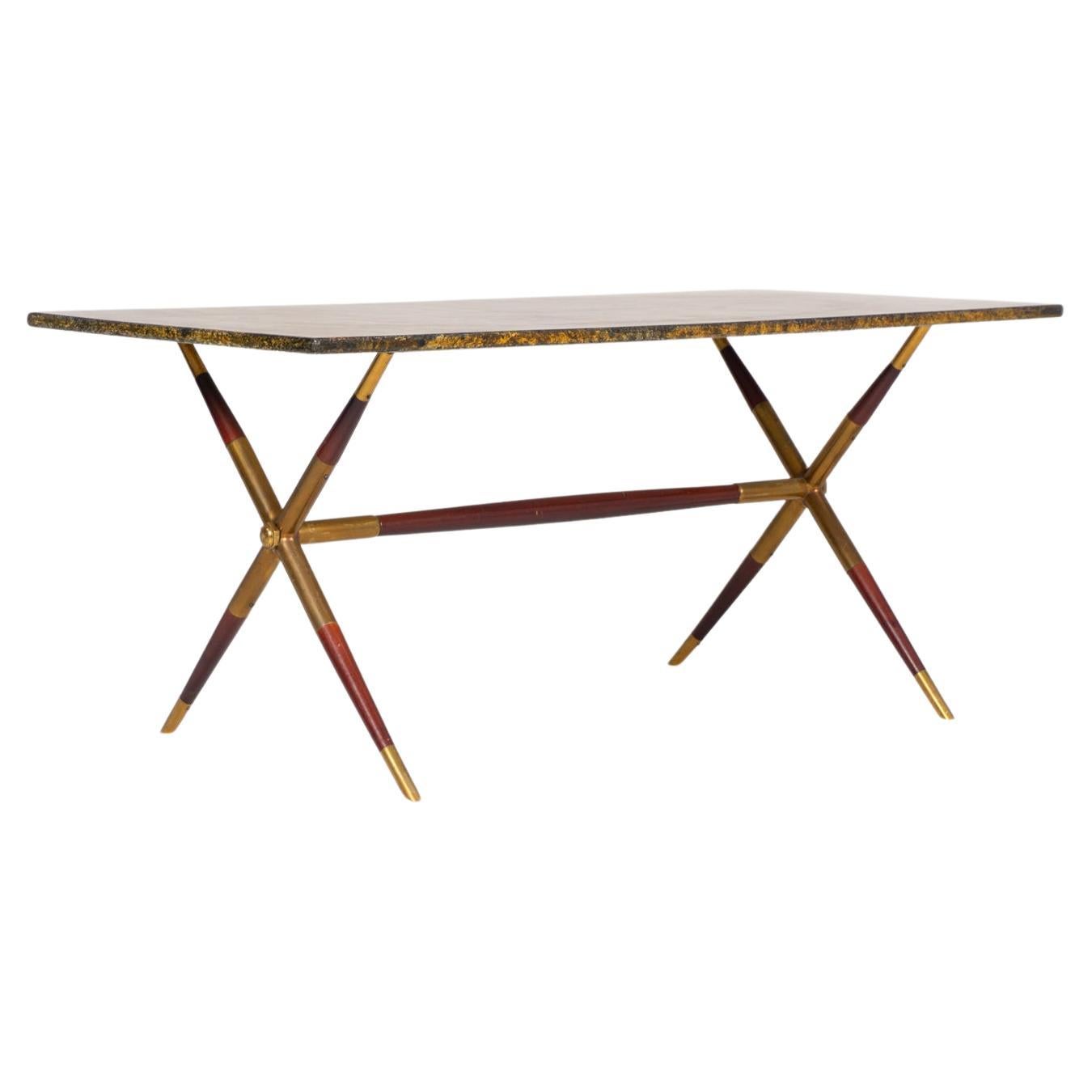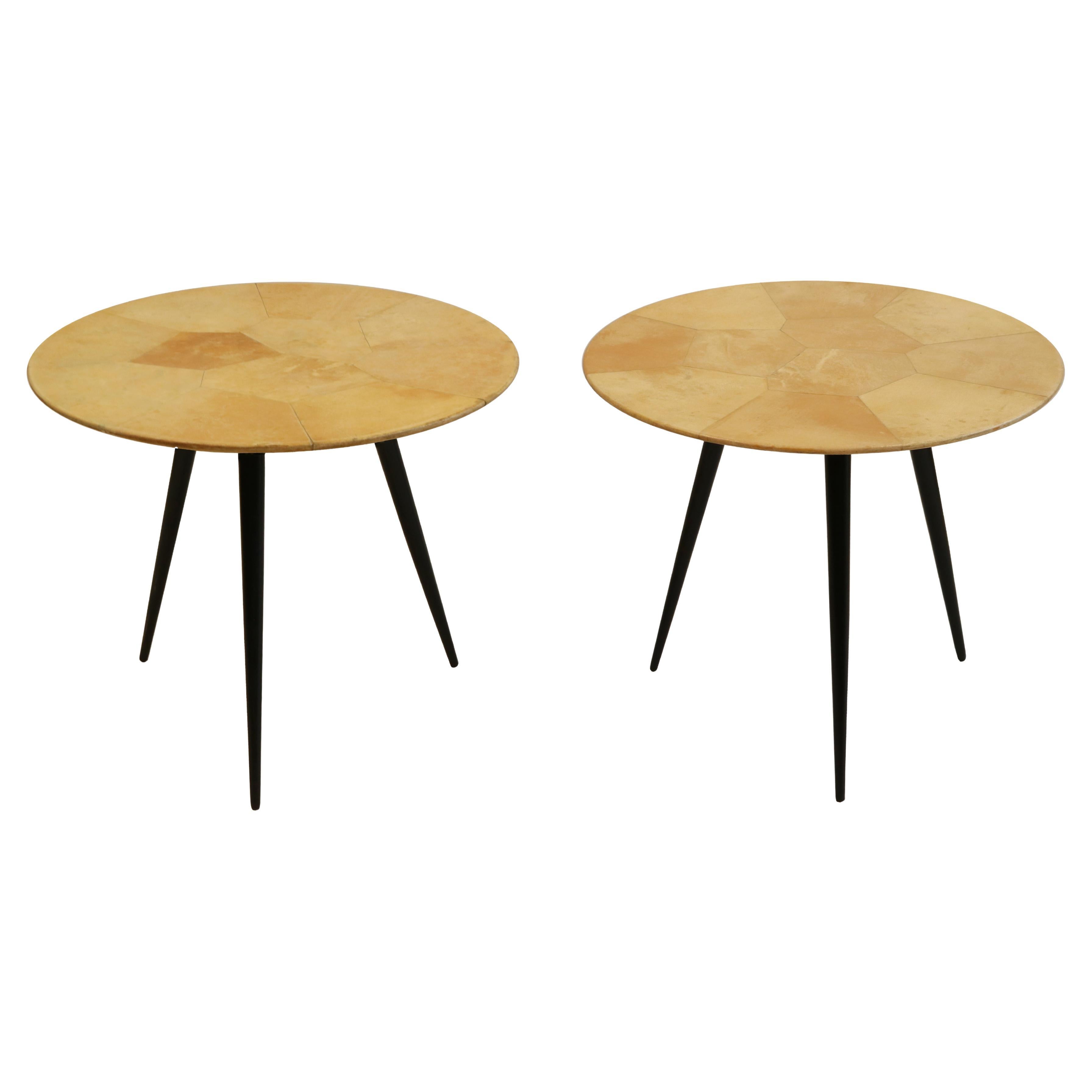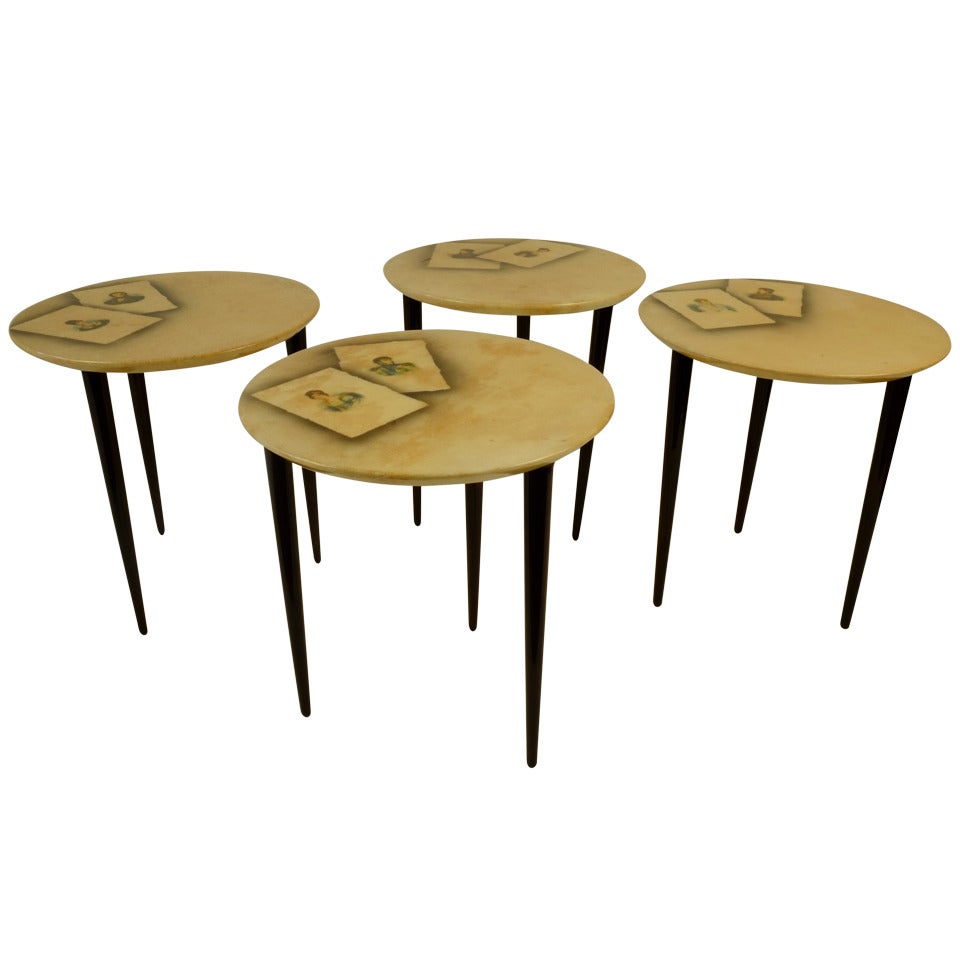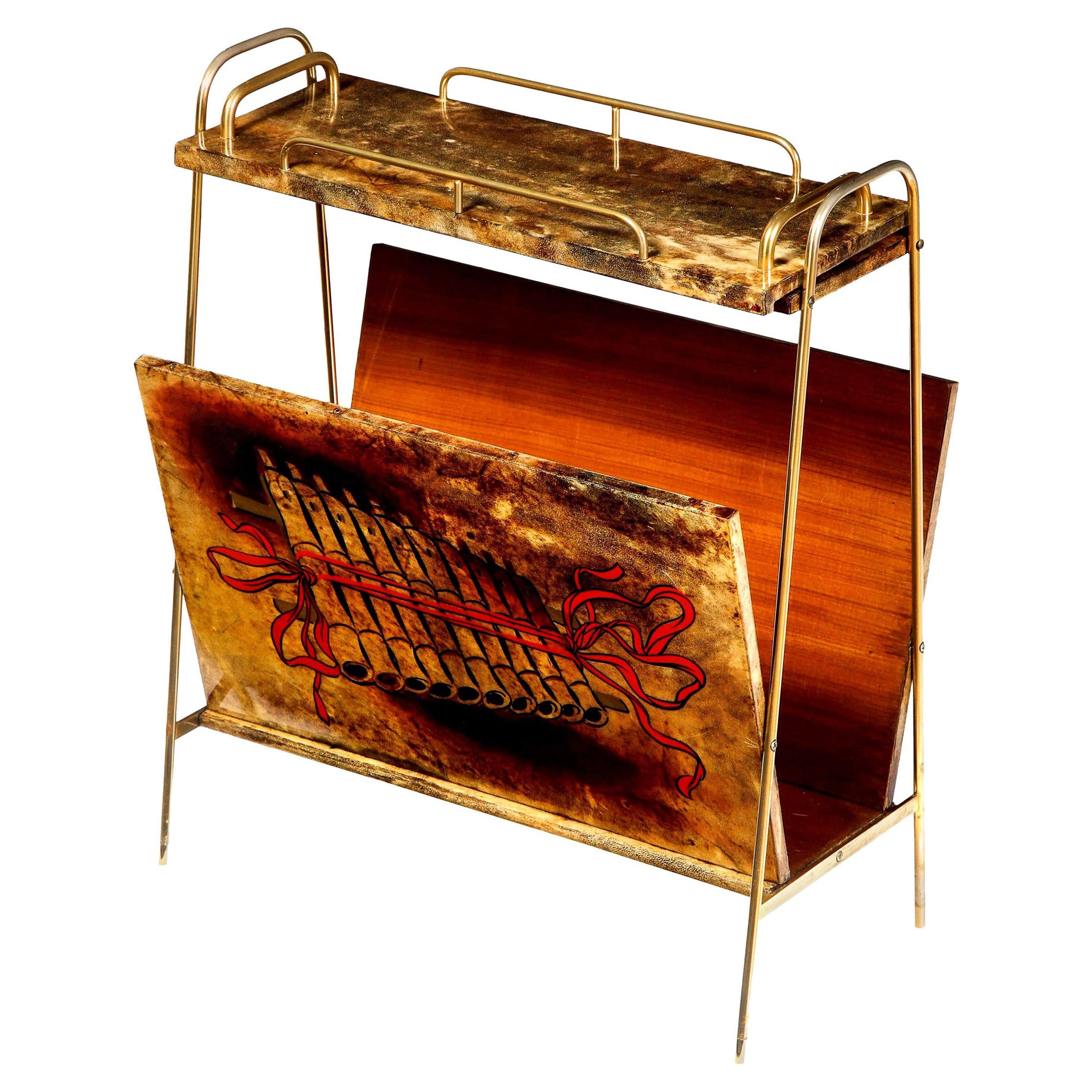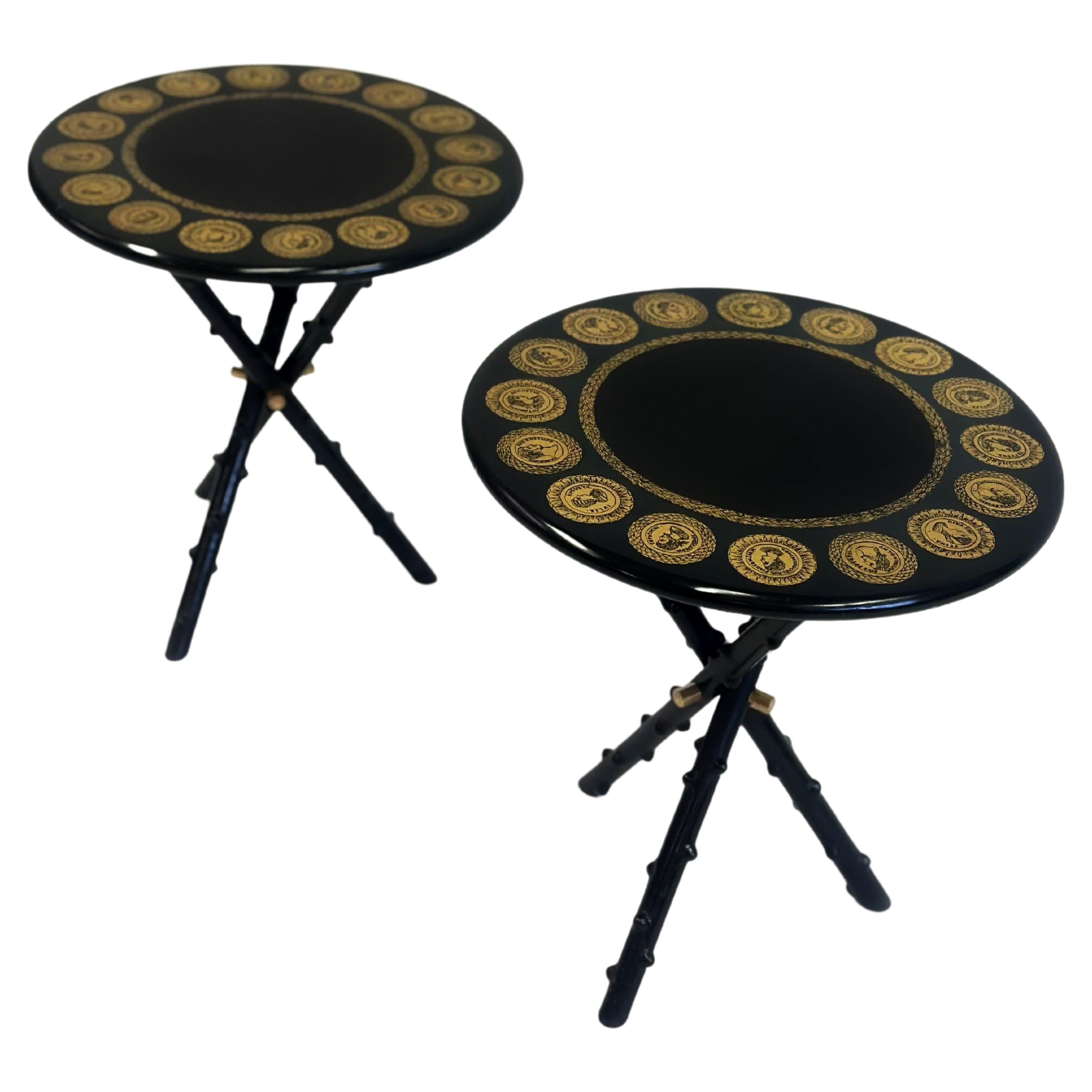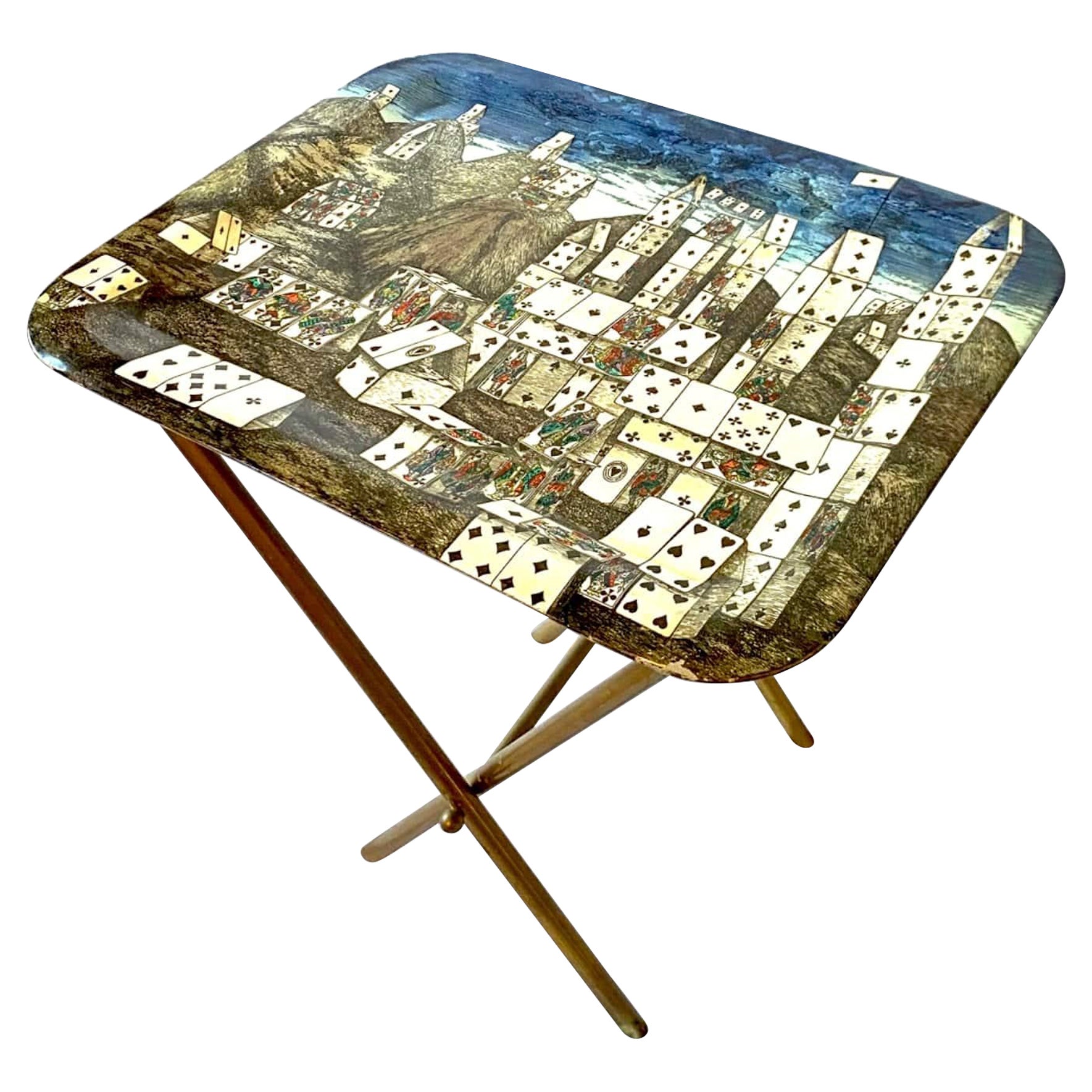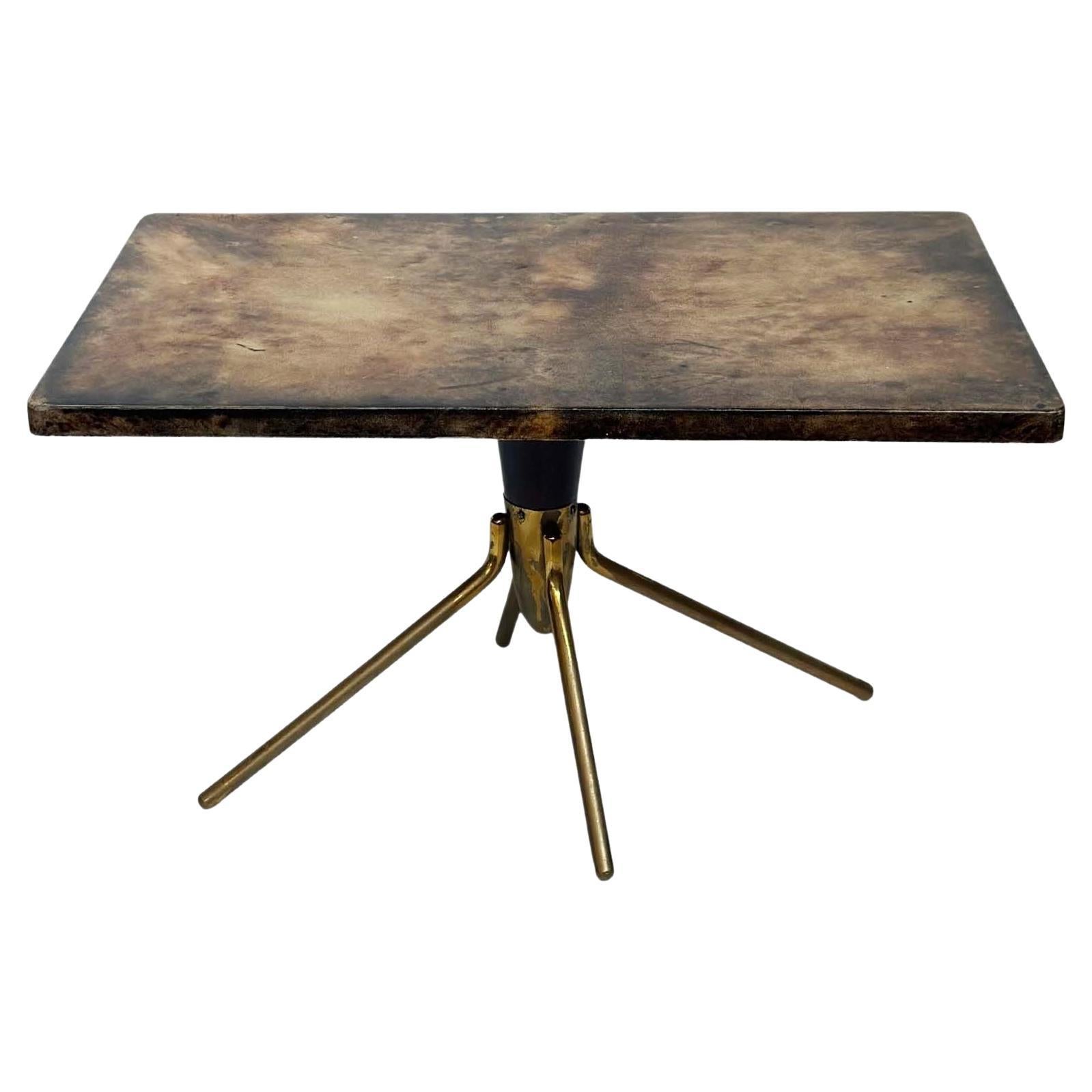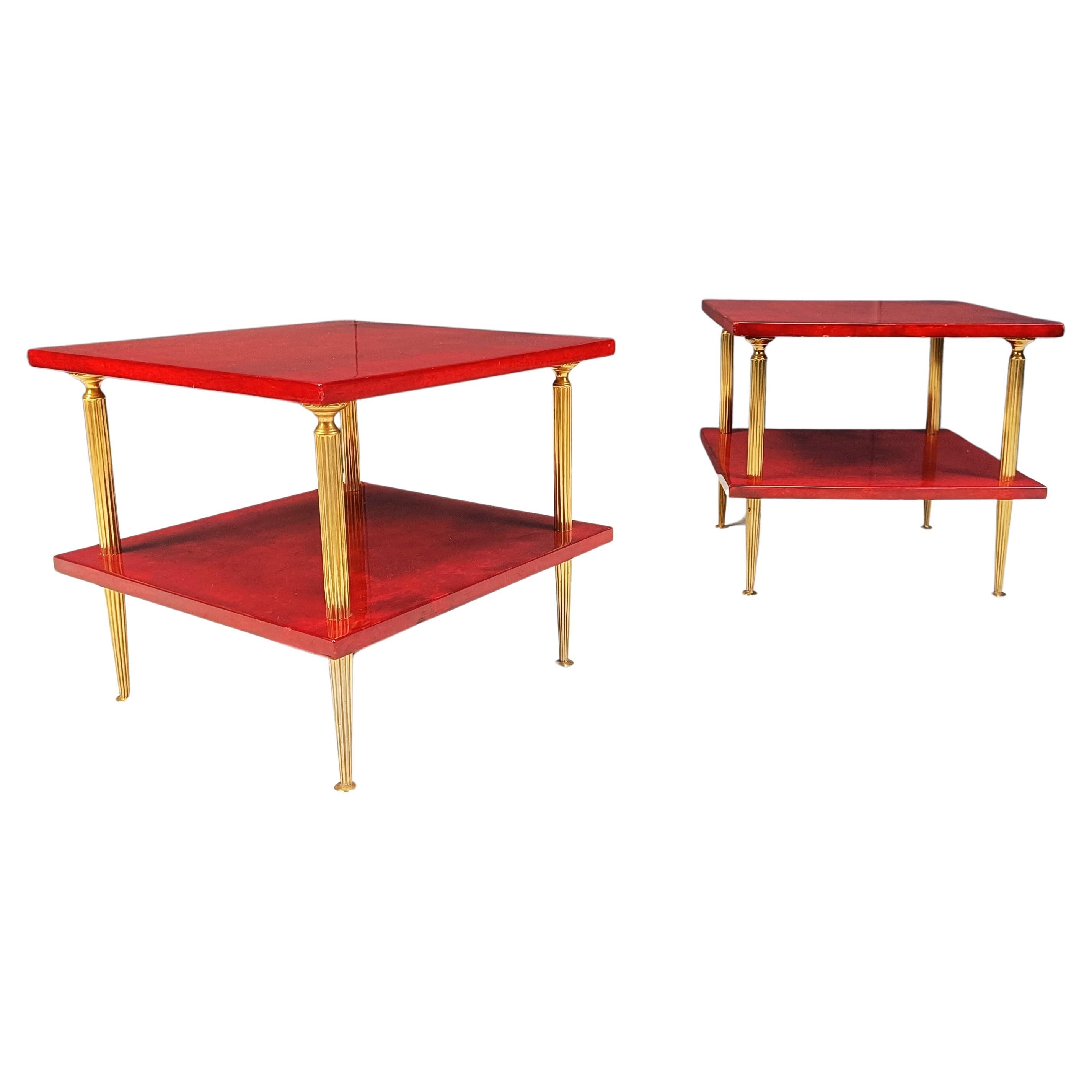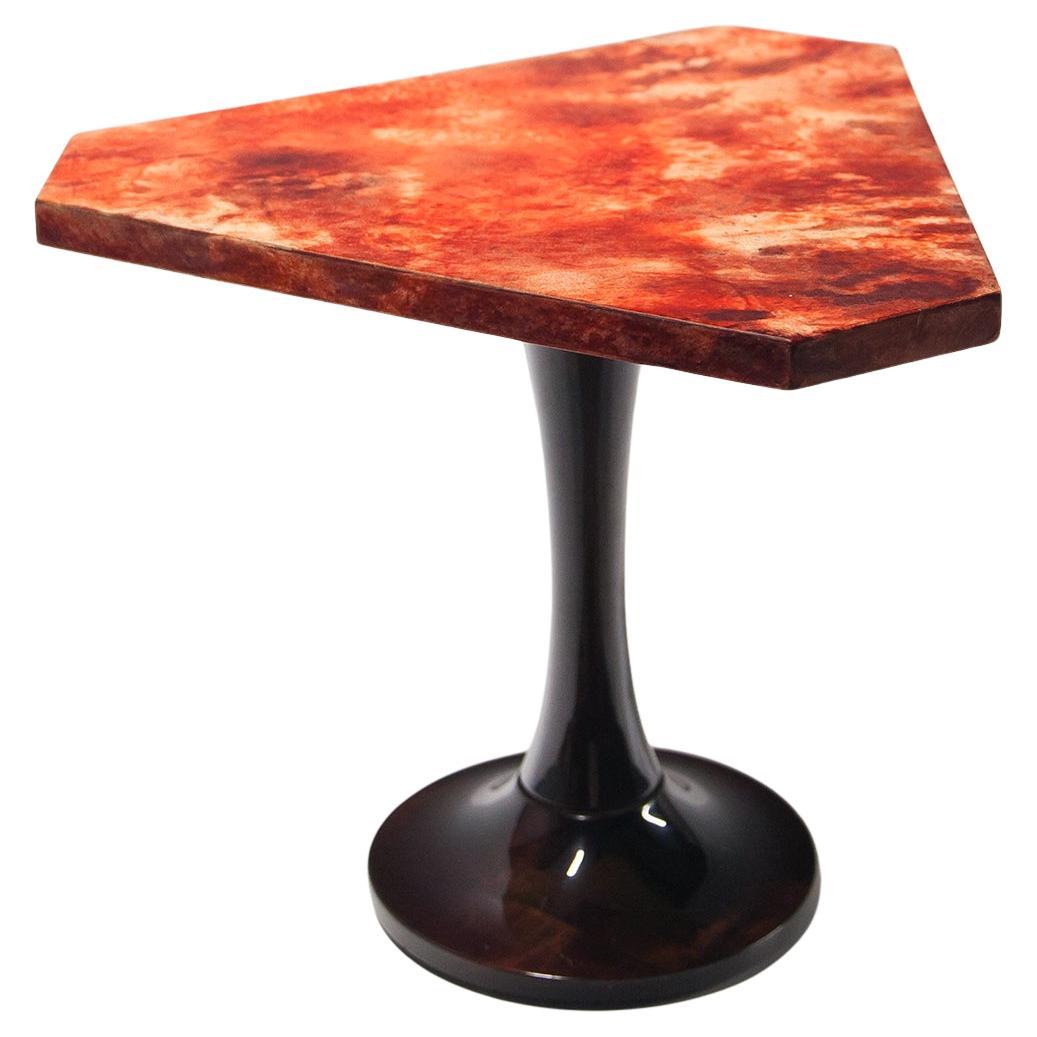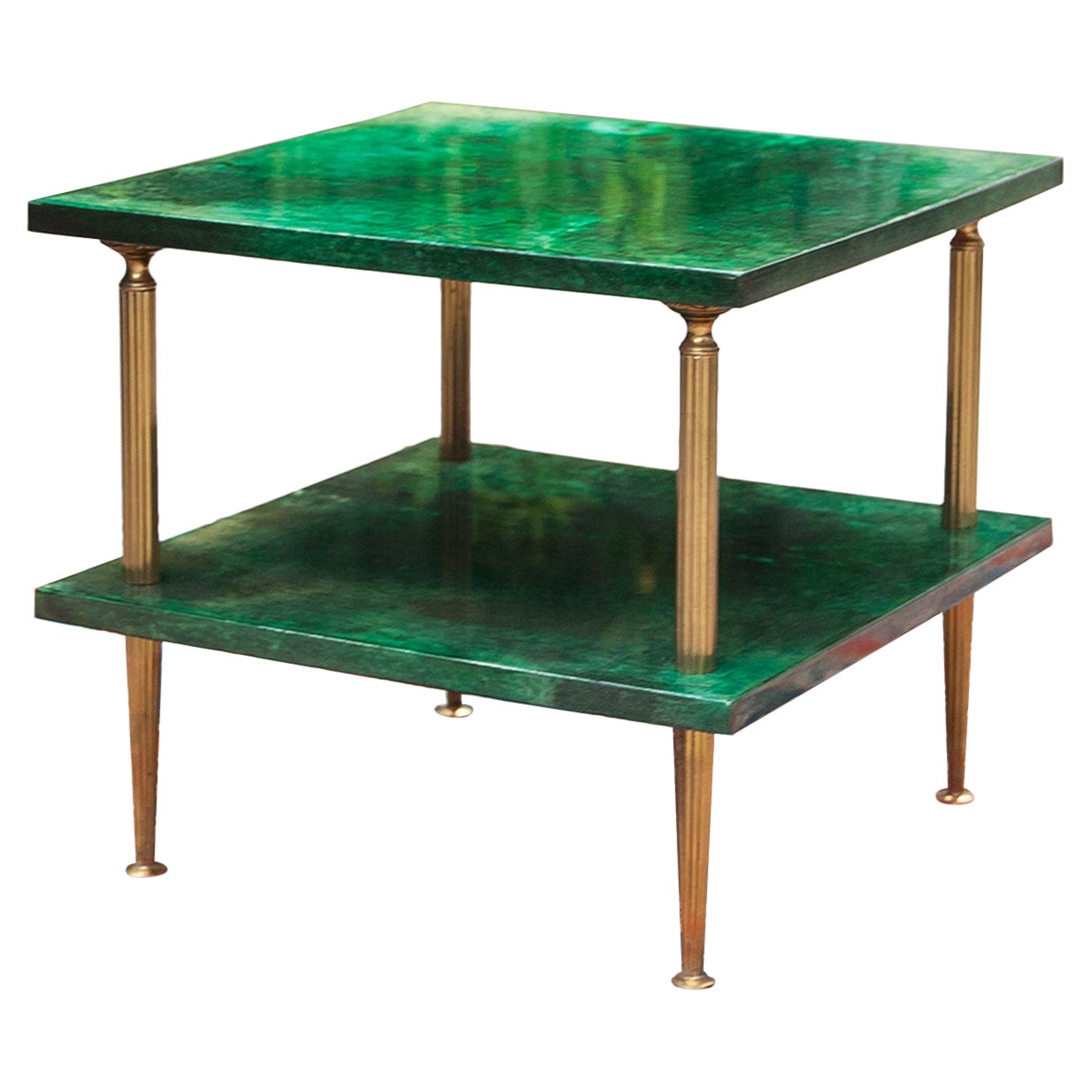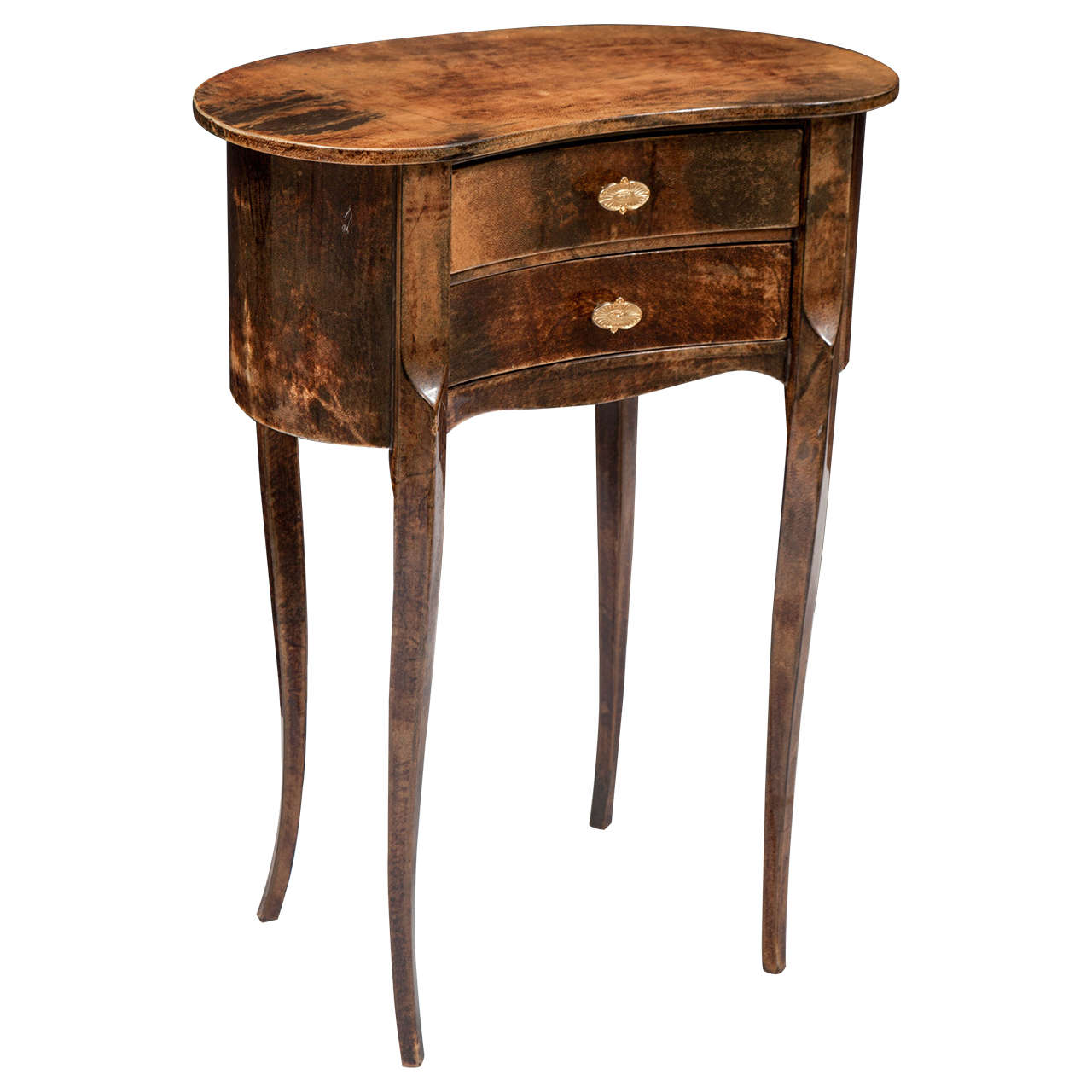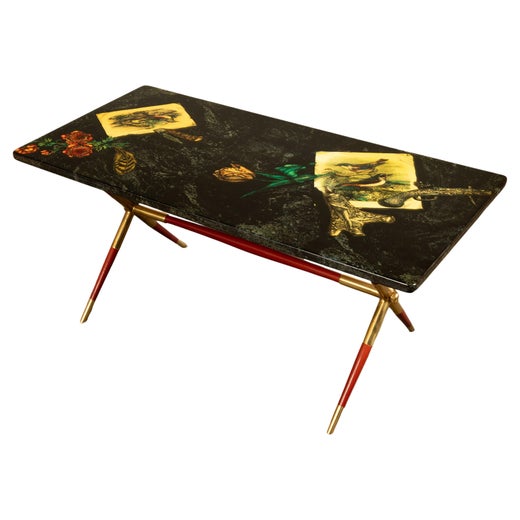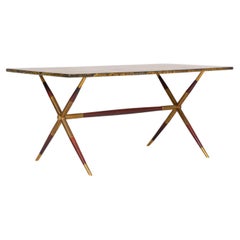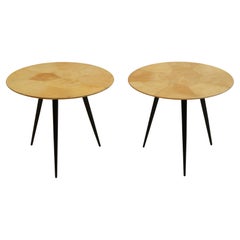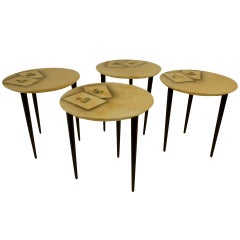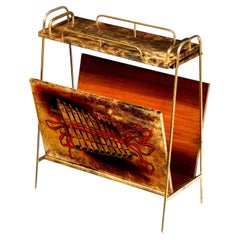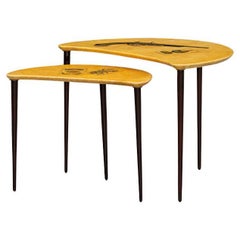
1950s Brown Goat Leather pair of Side Table by Aldo Tura & Piero Fornasetti
View Similar Items
1950s Brown Goat Leather pair of Side Table by Aldo Tura & Piero Fornasetti
About the Item
- Creator:Aldo Tura (Designer),Piero Fornasetti (Designer)
- Dimensions:Height: 16.54 in (42 cm)Width: 23.23 in (59 cm)Depth: 14.18 in (36 cm)
- Sold As:Set of 2
- Style:Mid-Century Modern (Of the Period)
- Materials and Techniques:
- Place of Origin:
- Period:
- Date of Manufacture:1950
- Condition:Wear consistent with age and use.
- Seller Location:Frankfurt, Hessen, DE
- Reference Number:1stDibs: LU958527384882
Aldo Tura
One of the most enigmatic and polarizing figures to emerge in Italian design, Aldo Tura is an outlier in the world of mid-century furniture. The designer’s glamorous bar carts, coffee tables, cabinets and more resist categorization and draw inspiration from Art Deco, Art Nouveau, Baroque, Surrealist and modernist styles.
Tura moved through distinct phases in his career in terms of aesthetics, influences and finishes, rendering his life’s work exciting and diverse. Despite these phases, he held a singular devotion to one material: lacquered goatskin. Tura established a furniture production house in 1939 in Lombardy, and some of his early work focused on tables, decorative lamps and more. He later expanded to bar furnishings like rolling carts, cabinets and complementary barware accessories like ice buckets and cocktail shakers. The eccentric, gleaming and luxe surface of lacquered goatskin was a constant, along with eggshell, parchment and leather.
By the 1950s, Tura had begun to use hand-painted figural panels on the surface of cabinets, serveware (such as carafes) and other pieces. He even replicated famous works by artists like Monet and Bruegel the Elder and art from the Middle Ages, sometimes playfully embedding the paintings on cabinets shaped like oversize books. Even though he had a favored color palette of rich chocolate browns and deep emeralds, his style remained consistently hard to define.
Tura was unlike most of his Italian contemporaries but held a similar reverence for the nation’s traditional craftsmanship and artisanal techniques. He never followed the growing trend of mass-produced, industrial furniture and stuck to creating small, meticulously handcrafted collections. This principled choice means that today, a Tura piece is a rare and highly coveted collectible. The Tura firm continues to operate in Brianza, promoting Italian craftsmanship and the eclectic materials embraced by their namesake designer.
Find authentic vintage Aldo Tura furniture today on 1stDibs.
Piero Fornasetti
The Italian artist and designer Piero Fornasetti was one of the wittiest and most imaginative talents of the 20th century. He crafted an inimitable decorative style from a personal vocabulary of images that included birds, butterflies, hot-air balloons, architecture and — most frequently, and in some 500 variations — an enigmatic woman’s face based on that of Cavalieri. Fornasetti used transfer prints of these images, rendered in the style of engravings, to decorate an endless variety of furnishings and housewares that ranged from chairs, tables and decorative objects to dinner plates, table lamps and umbrella stands. His work is archly clever, often Surrealist and always fun.
Fornasetti was born in Milan, the son of an accountant, and he lived his entire life in the city. He showed artistic talent as a child and enrolled at Milan’s Brera Academy of Fine Art in 1930, but was expelled after two years for consistently failing to follow his professors’ orders.
A group of Fornasetti's hand-painted silk scarves, displayed in the 1933 Triennale di Milano, caught the eye of the architect and designer Gio Ponti, who, in the 1940s, became the artist's collaborator and patron. Beginning in the early 1950s, they created a striking series of desks, bureaus and secretaries that pair Ponti’s signature angular forms with Fornasetti’s decorative motifs — lighthearted arrangements of flowers and birds on some pieces, austere architectural imagery on others. The two worked together on numerous commissions for interiors, though their greatest project has been lost: the first-class lounges and restaurants of the luxury ocean liner Andrea Doria, which sank in 1956.
Fornasetti furnishings occupy an unusual and compelling niche in the decorative arts: they are odd yet pack a serious punch. They act, essentially, as functional sculpture. A large Fornasetti piece such as a cabinet or a desk can change the character of an entire room; his smaller works have the aesthetic power of a vase of flowers, providing a bright and alluring decorative note. The chimerical, fish-nor-fowl nature of Fornasetti’s work may be its greatest strength. It stands on its own. Bringing the Fornasetti look into the future is Barnaba Fornasetti, who took the reins of the company after his father's death.
Find vintage Piero Fornasetti dinner plates, chairs, tables and other furniture on 1stDibs.
You May Also Like
Vintage 1950s Side Tables
Brass
Vintage 1950s Italian Mid-Century Modern Side Tables
Goatskin, Wood
Vintage 1960s Italian Mid-Century Modern Side Tables
Vintage 1950s Italian Mid-Century Modern Magazine Racks and Stands
Brass
Mid-20th Century Italian Mid-Century Modern Side Tables
Brass, Iron
Vintage 1950s Italian Mid-Century Modern Side Tables
Metal, Brass
Recently Viewed
View AllRead More
Julie Charbonneau Takes a Bespoke Approach to Clean-Lined Design
When it comes to authentic materials and quality craftsmanship, the Toronto-based designer accepts no substitutes.
Barnaba Fornasetti’s Hallucinatory House Has His Father’s Spirit
Behind a nondescript facade in northeastern Milan is the magical residence of Barnaba Fornasetti. It's a shrine to the style developed by his design-legend father, which still defies categorization.
